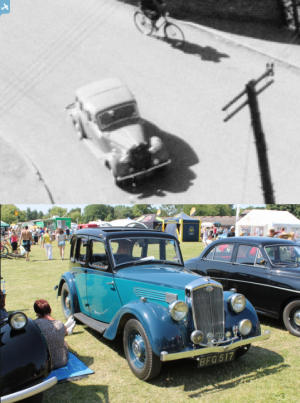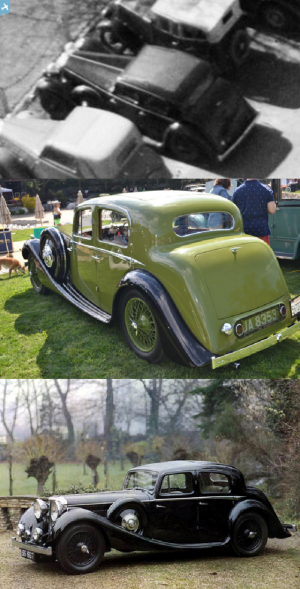EAW021815 ENGLAND (1949). W. Pinkham and Sons Ltd Glove Factory, Witham, 1949. This image was marked by Aerofilms Ltd for photo editing.
© Copyright OpenStreetMap contributors and licensed by the OpenStreetMap Foundation. 2024. Cartography is licensed as CC BY-SA.
Nearby Images (11)
Details
| Title | [EAW021815] W. Pinkham and Sons Ltd Glove Factory, Witham, 1949. This image was marked by Aerofilms Ltd for photo editing. |
| Reference | EAW021815 |
| Date | 9-April-1949 |
| Link | |
| Place name | WITHAM |
| Parish | WITHAM |
| District | |
| Country | ENGLAND |
| Easting / Northing | 581930, 215115 |
| Longitude / Latitude | 0.63908673638859, 51.804582447209 |
| National Grid Reference | TL819151 |
Pins
 Billy Turner |
Thursday 18th of February 2016 08:53:08 PM | |
 Billy Turner |
Thursday 18th of February 2016 05:44:19 PM | |
 Billy Turner |
Wednesday 17th of February 2016 09:42:14 PM |


![[EAW021815] W. Pinkham and Sons Ltd Glove Factory, Witham, 1949. This image was marked by Aerofilms Ltd for photo editing.](http://britainfromabove.org.uk/sites/all/libraries/aerofilms-images/public/100x100/EAW/021/EAW021815.jpg)
![[EAW021811] W. Pinkham and Sons Ltd Glove Factory, Witham, 1949. This image was marked by Aerofilms Ltd for photo editing.](http://britainfromabove.org.uk/sites/all/libraries/aerofilms-images/public/100x100/EAW/021/EAW021811.jpg)
![[EAW021814] W. Pinkham and Sons Ltd Glove Factory and the Cattle Market, Witham, 1949. This image was marked by Aerofilms Ltd for photo editing.](http://britainfromabove.org.uk/sites/all/libraries/aerofilms-images/public/100x100/EAW/021/EAW021814.jpg)
![[EAW021810] W. Pinkham and Sons Ltd Glove Factory, Witham, 1949](http://britainfromabove.org.uk/sites/all/libraries/aerofilms-images/public/100x100/EAW/021/EAW021810.jpg)
![[EAW021809] W. Pinkham and Sons Ltd Glove Factory, Witham, 1949](http://britainfromabove.org.uk/sites/all/libraries/aerofilms-images/public/100x100/EAW/021/EAW021809.jpg)
![[EAW021813] W. Pinkham and Sons Ltd Glove Factory and the Cattle Market, Witham, 1949. This image was marked by Aerofilms Ltd for photo editing.](http://britainfromabove.org.uk/sites/all/libraries/aerofilms-images/public/100x100/EAW/021/EAW021813.jpg)
![[EAW021812] W. Pinkham and Sons Ltd Glove Factory, Witham, 1949. This image was marked by Aerofilms Ltd for photo editing.](http://britainfromabove.org.uk/sites/all/libraries/aerofilms-images/public/100x100/EAW/021/EAW021812.jpg)
![[EAW030766] The Thomas Cullen and Sons Seed Warehouses, Witham, 1950. This image was marked by Aerofilms Ltd for photo editing.](http://britainfromabove.org.uk/sites/all/libraries/aerofilms-images/public/100x100/EAW/030/EAW030766.jpg)
![[EAW030765] The Thomas Cullen and Sons Seed Warehouses, Braintree Road and St Nicholas's Church, Witham, 1950. This image was marked by Aerofilms Ltd for photo editing.](http://britainfromabove.org.uk/sites/all/libraries/aerofilms-images/public/100x100/EAW/030/EAW030765.jpg)
![[EAW030764] The Thomas Cullen and Sons Seed Warehouses and Braintree Road, Witham, 1950. This image was marked by Aerofilms Ltd for photo editing.](http://britainfromabove.org.uk/sites/all/libraries/aerofilms-images/public/100x100/EAW/030/EAW030764.jpg)
![[EAW030767] The Crittall Steel Works and the surrounding countryside, Witham, from the south, 1950. This image was marked by Aerofilms Ltd for photo editing.](http://britainfromabove.org.uk/sites/all/libraries/aerofilms-images/public/100x100/EAW/030/EAW030767.jpg)







